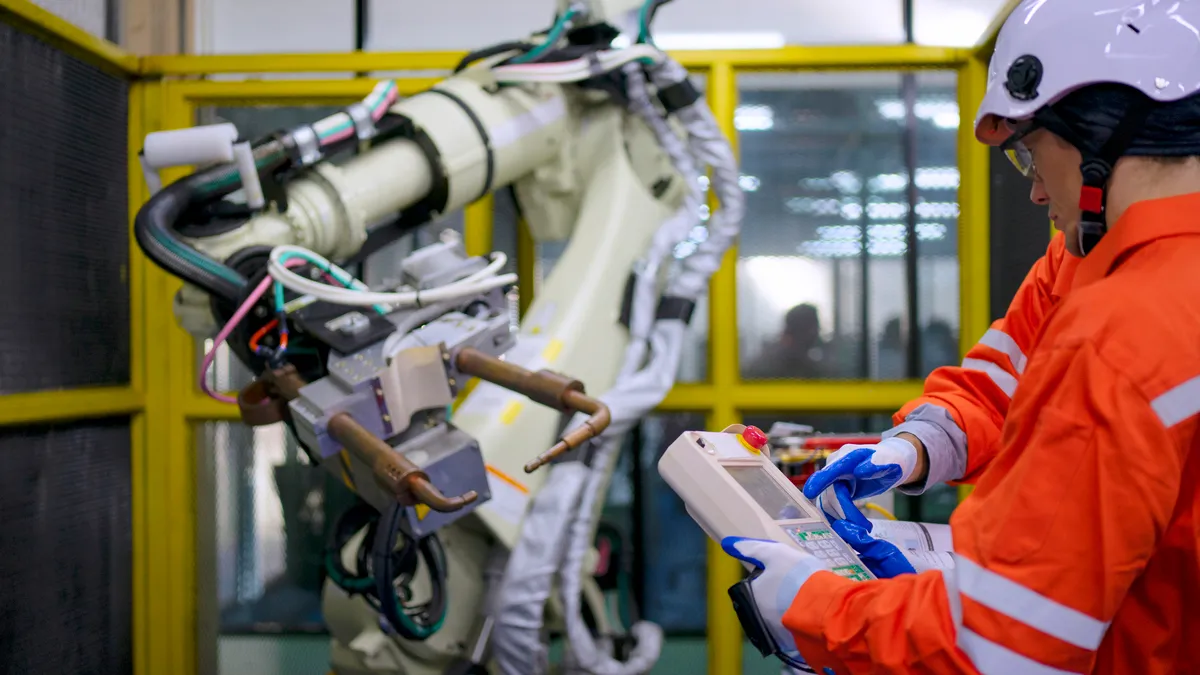Four years ago, the COVID-19 pandemic split the manufacturing workforce: while 41% of employees adopted remote work, the majority were unable to trade the factory floor for home offices.
“Right away, we began having conversations with companies about how to ensure they weren’t creating two groups within,” Carolyn Lee, president and executive director of the Manufacturing Institute, said about manufacturers’ early pandemic response.
The priority for manufacturers became facilitating an active employee presence at both the corporate and production level. For some, this meant bringing half the corporate workforce into the office on any given day, in line with social distancing, Lee said.
Now, as U.S. companies increasingly beckon employees back to the office, many manufacturers have shifted their perspective on work-from-home policies.
“I talk to a lot of manufacturing leaders who want to enable flexibility and remote work to attract the best talent,” Lee said. “The conversation has really evolved to where flexibility is key and very much an essential ingredient for attracting and maintaining a workforce.”
A solution for the manufacturing labor shortage?
Faced with a mounting labor shortage, manufacturers are increasingly embracing remote work as part of improving flexibility for their workforce. The prevailing question is how best to optimize it for an industry built on in-person operations.
“In terms of the employees that can work remotely, such as their engineering staff, manufacturers are doing what they can to retain their talent,” said Denise Leipold, director of operations and senior business advisor for SME Workforce Development.
Leipold recalled a major automotive supplier that transitioned its entire design and engineering teams to remote work in the last two years. However, the setup ultimately hindered effective collaboration between its design and engineering teams during early project phrases, which carried over to implementation on the shop floor.
“What we have seen essentially in some companies attempting this is that communication breaks down,” Leipold said. “Now, if there were capabilities in terms of the design staff or manufacturing engineer being able to see what’s happening in those processes on the shop floor, that problem could potentially be solved. But without that, it’s a big quandary because it doesn’t work, [and] the production end suffers.”
Capabilities to help improve communication are emerging, which Leipold described as crucial for the industry’s evolution, noting that adopting such technologies “can’t happen fast enough.”
With digital twins and smart glasses providing real-time factory insights and remote maintenance feeds, manufacturers are becoming better equipped to facilitate effective communication between remote and in-person employees.
As of now, Lee believes it will take more than manufacturers leveraging emerging technologies to bridge the gap.
“There’s a very strong thread in manufacturing, across all roles, to have people in-person because the lifeblood of the companies [is] the production part,” she said.
Facilitating corporate connection through hybrid work
Lee underscored the importance of creating a strong corporate culture where employees feel connected to their workplace. This involves organizing community-building events and forming employee resource groups that bring workers together based on shared interests or experiences, regardless of their job function.
Brian Wilkerson, head of EV Digital Product at Ford Pro, echoed Lee’s sentiment. Clear communication and teamwork are crucial for every team’s success — the more we interact face-to-face, the more we can strengthen those relationships, he told Manufacturing Dive via email.
Simple gestures that may have gone unnoticed before the pandemic, like saying good morning, chatting by the water cooler or randomly having lunch with a colleague, have become more significant moments in the workday, he said.
Ford was an early adopter of a flexible hybrid model during the pandemic, according to Wilkerson. He said the company has maintained that flexibility, initially prioritizing it for office workers with caregiving responsibilities. Now, senior leaders have the authority to decide how their teams will return to the office, including designating in-person workdays and which locations best accommodate teams’ needs.
Other companies are taking similar paths by introducing core days for their corporate employees to work in person. Jif peanut butter manufacturer J.M. Smucker designed a particularly popular hybrid policy, which required corporate workers to be on-site only six days per month, according to a Wall Street Journal report.
Ultimately, Lee said that companies need to ensure they’re in-person enough to maintain the strong ties needed to facilitate the efficiencies of remote work.
“Core days: are they monthly, weekly? Do you have each team build their own? Do you do corporate-wide?” Lee said. “I don’t know that the jury is in on the best way to get that done yet.”













![Salesforce AI's CEO sits onstage across from Cristina Criddle. Screens that say Human[X] hang behind them.](https://imgproxy.divecdn.com/J71WpXWHjr8jmbCw_PX7Cp2YH7Pmo8dP66Pz0SEPfw4/g:nowe:0:104/c:1024:578/rs:fill:1200:675:1/Z3M6Ly9kaXZlc2l0ZS1zdG9yYWdlL2RpdmVpbWFnZS9HZXR0eUltYWdlcy0yMjA0NjUxNDM0LmpwZw==.webp)






